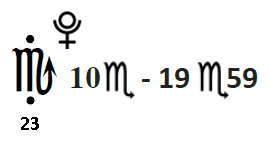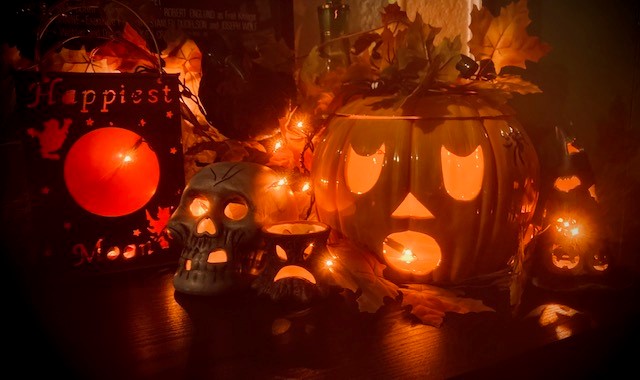ERESHKIGAL

Before Pluto, before Hades, before Persephone… there was Ereshkigal, Queen of the Dead and Goddess of Kur, the Sumerian Underworld. Ereshkigal rules from her palace, Ganzir, and the seven gates that keep the dead are guarded by her servant, Neti. Any souls that leave the underworld do so only with the permission of Ereshkigal. Her name literally translates as “She of the Great Below” so it would seem her abduction (yep, that happened here first) and reign in the Underworld was destined from birth.
Ereshkigal was born of the cosmic ocean when the primordial goddess, Nammu, was impregnated by her son, An, the sky god. Ereshkigal was later abducted by Kur, which has various potential meanings. In some myths, Kur refers to a dragon but in other places Kur is a vague cosmic concept, or simply another term used for the netherworld. So, we can interpret Ereshkigal’s abduction as being by her own destiny or by the cosmos itself[1]. Nevertheless, whether she was willing or reluctant in the beginning, Ereshkigal fully embraced her underworld realm and now reigns as an all-powerful queen.
As for consorts, Ereshkigal has had a few. Her sexual appetite is said to be near insatiable, which is not surprising given the connection between death and sex. Orgasm is often described as the “little death”, where intimacy is at its peak and we merge with another, in the same way we merge with the goddess upon death. These great mysteries that are Ereshkigal’s, also happen to be in the domain of Scorpio, where Ereshkigal sits in the Girdle of the Goddess.
Back to Ereshkigal’s partners, her first husband was Gugalana, the Great Bull of Heaven. However, he was killed while on a mission to avenge Inanna, Ereshkigal’s younger sister. The myth of The Descent of Inanna tells the story of Inanna’s journey to the Underworld for the funeral and the price Ereshkigal exacts for the death of her husband.
After Gugalana, Ereshkigal had a couple other consorts but nothing long term until she married Nergal, god of war, destruction, and disease, who then became Ereshkigal’s steady consort ruling alongside her for part of the year. There are myths that suggest that the meeting and subsequent marriage of Ereshkigal and Nergal was arranged by the god Enki to alleviate the constant death and destruction that was Nergal’s power. However, war is considered part of the human condition and can’t be eliminated completely. Therefore, Nergal only stays with Ereshkigal for part of the year, which explains wartimes[2] (since conflicts were waged only in certain seasons).
As with the later Greek adaptations, these myths seek to explain the seasons, and the cycle of death and rebirth. However, in the earlier Sumerian versions we see the ruler of the underworld realm is the goddess and the eternally dying god is the one who cycles. As time and cultures progressed towards a more patriarchal philosophy, the underworld power and realm of the goddess was given to the god, and the goddess was the one who journeyed between worlds. The goddess’s abduction shifted from feminine providence to masculine dominion, with major sexual undertones. Instead of the god being accepted into the goddess to await rebirth, he takes over her realm, steals her power, and forces her to be his consort. However, because the goddess does not die, the only way to maintain the seasonal theme of the myths was to have the goddess actually split herself (usually represented by a mother/daughter motif). For half of the year the goddess is whole and balanced (life on earth is fruitful), and the other half of the year she is split with part of herself in the Underworld and part mourning on earth (life on earth dies)…once again, diluting her power.
Some modern interpretations, especially in contemporary Wicca, see these adapted versions as the goddess coming to understand death from the god because, as the eternal goddess, she never truly experiences death. However, these interpretations only apply to the goddess in her earthly aspect, completely ignoring the very real understanding of death the Venusian Inanna experiences when she descends to the Underworld.
To come back to the point, if we want to truly understand the power of the dark goddess, Ereshkigal is where we need to start. Death is her business and souls are her charge. It is by the will of Ereshkigal that life comes from death. She is the balance that keeps the gates against chaos. She is the power at our source and core. She is the dark we fear and revere. She is our Shadow. Honour Her!
Holy Ereshkigal! Great is your renown!
Holy Ereshkigal! I sing your praises!
Wolkstein and Kramer, 89
[1] The draconic abduction does act as the catalyst for another myth in which the dragon Kur is hunted, though it is never explicitly stated whether the dragon is slayed.
[2] Nergal is most commonly associated with war, plague, and destruction but we can actually see both Mars and Pluto associations in the mythology. He represents the fight for life and the eternally dying agricultural god (Mars) who dies, goes to the Underworld and is later returned to life on earth. However, unlike the other agricultural god Dumuzi, Nergal is actually a lord in the Underworld (Pluto) during his stay.
